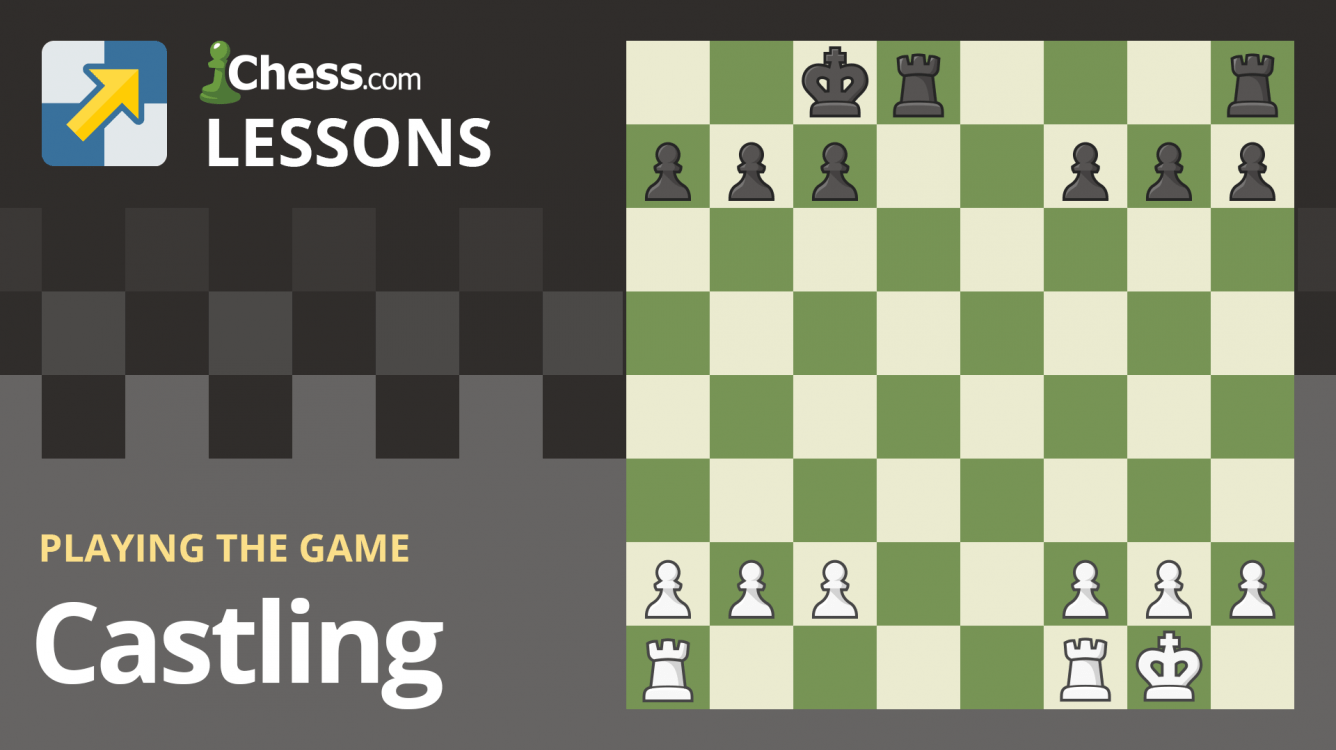
How to Castle in Chess?
Chess players taking their first steps are often confused about how to castle. This special move is the only time you can move two pieces in the same turn. Castling only involves the king and the rook (no other chess pieces), and it is believed that it was invented around the 1500s in order to speed up the game.
Castling gets your king out of the center of the board where all the action is taking place! This makes it more challenging for your opponent to checkmate your king!
- Your king and rook have not moved!
- Your king is NOT in check!
- Your king does not pass through check!
- No pieces between the king and rook!
Here is what castling looks like. White has castled kingside while Black has castled queenside.
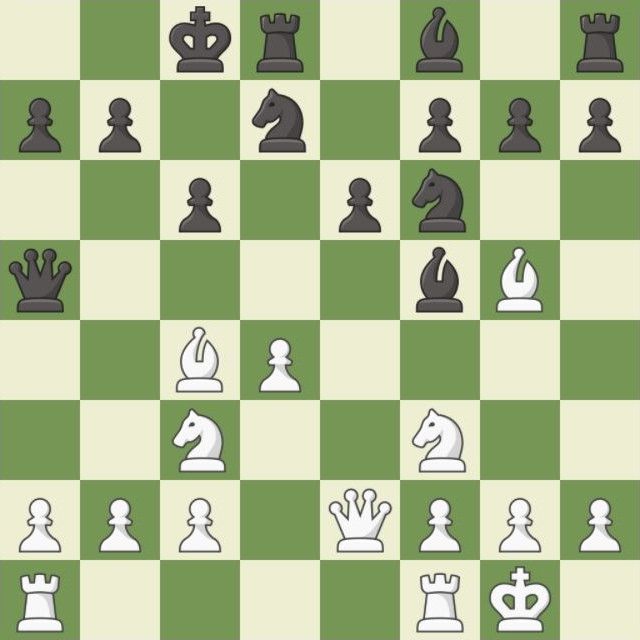
The white king is castled kingside (short) while Black is castled queenside (long).
Here are four rules about castling!
Rule 1. You cannot castle if you have moved your king (or the rook)!
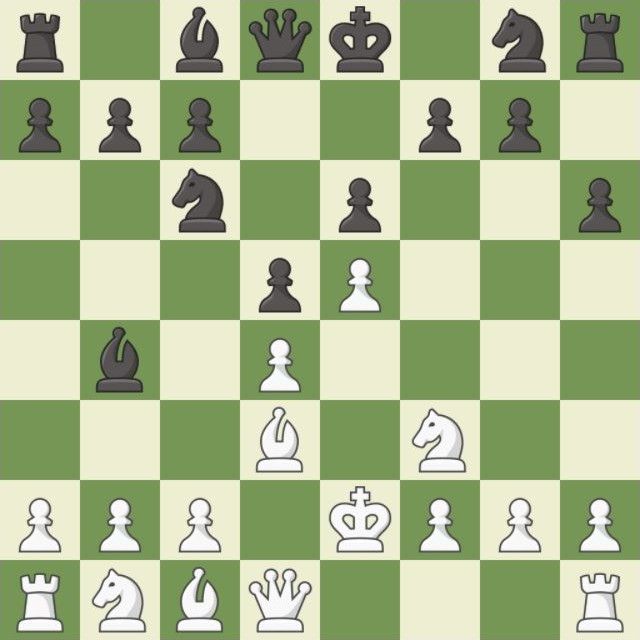
The white king has moved from e1 to e2 and has lost the right to castle.
In the above position, the white king has moved from e1 to e2. When white moved their king they forfeited the right to castle during the game. Even if white puts their king back on e1 they still are not allowed to castle.
Note: You are not allowed to castle if you moved the rook that would be part of the castling move.
Rule 2. You are not allowed to castle out of check!

The black bishop on b4 is making check. White cannot castle while ins check.
The white king is in check from the black bishop on b4, and you are not allowed to castle to get out of the check. White would first have to block the check with a move such as pawn to c3 to make castling possible on the next turn.
Rule 3. You are not allowed to castle through check!
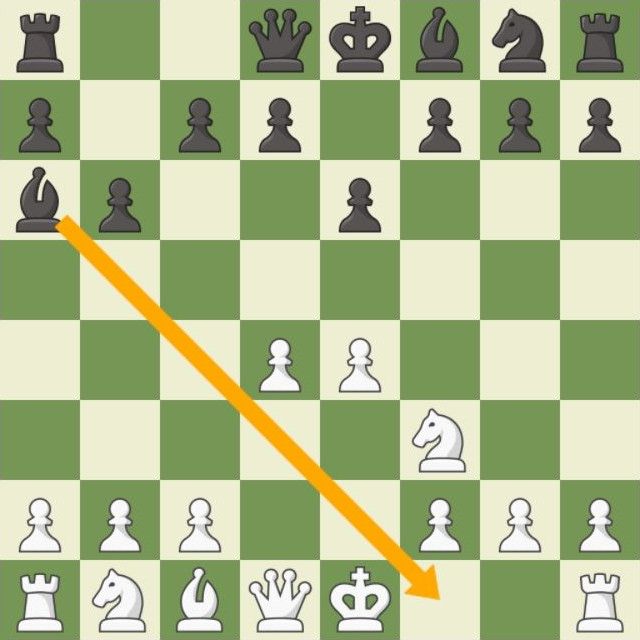
White is not allowed to castle through the bishop's "check" on f1.
The black bishop on a6 is attacking the f1-square next to the white king. To castle, the white king would have to cross over this square which is not allowed.
Rule 4. No pieces can be between the king and the rook
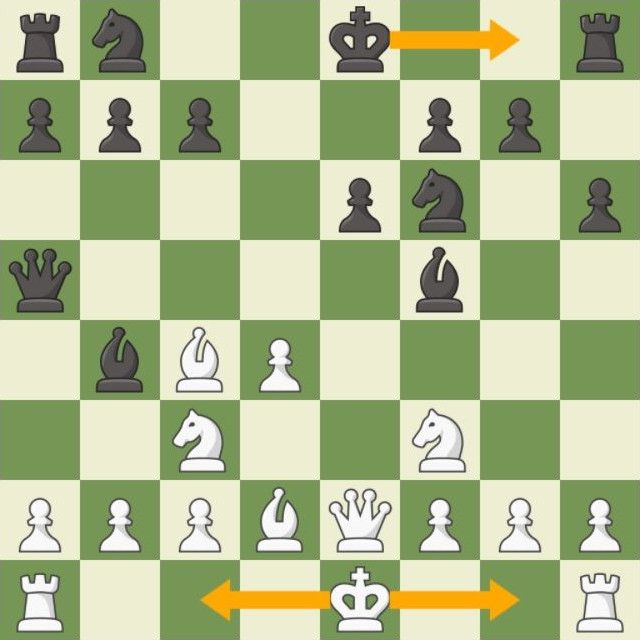
In this position, White can castle kingside or queenside. Black can only castle kingside since there is still a black knight on b8.
Quick tip: When you castle, the king will always go to the same color square that he started the game on. White will always move the king two squares to a dark square, and Black will move the king two squares to a light square.
Castling is a great way to protect your king and bring a rook toward the center of the board!
Castle your way to victory today on Chess.com!

